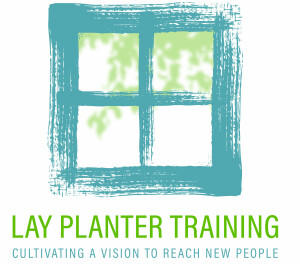Lay planters open new windows on ministry
 The time before a journey begins is often filled with high hopes and creative expectations. It’s a time for vision and daydreams.
The time before a journey begins is often filled with high hopes and creative expectations. It’s a time for vision and daydreams.
In the past two years, the Baltimore-Washington Conference started a new journey with a new ministry area: New Faith Expressions. It was a leap of faith that the people called United Methodist still had something essential and life-transforming left to say, and share, with the world.
It is a ministry of innovation, of broad horizons, and uninhibited faith. In the words of its director, the Rev. Bill Brown, New Faith Expressions “seeks to bring the church God loves closer to the people God loves.”
They are willing to defy expectations. They’re opening new windows on God’s world. God’s light shines through.
I’m hopeful the Lay Church Planters training delivers a new, and maybe even surprising, view of the laity and all that is possible. These postcards will record a bit of the journey.
Extend the selections below and open up a new view of the church alive in the world.
Claim. The invitation goes out.
 And so, yes, you claim. Yes, you imagine. Yes, you begin. Yes, you build. You open new windows – fresh expressions – and the church is reborn.
And so, yes, you claim. Yes, you imagine. Yes, you begin. Yes, you build. You open new windows – fresh expressions – and the church is reborn.
It all started with an invitation. The Rev. Bill Brown, the Conference Director of New Faith Expressions, along with Doug Ruffle and Bener Agtarap of the denomination’s Discipleship Ministries, asked the laity of the BWC if they wanted to plant.
Plant churches, specifically. But also plant ideas, and expressions of faith, and sacred experimentation. It’s a pilot program for the BWC, so they’re planting, too – sowing hopes that the denomination’s laity will begin to see themselves as pioneers or, maybe, apostles.
Twenty people took them up on their invitation. I joined because I wanted to see the laity in action, to see how their callings unfolded in interesting ways, to watch people begin to dream about what tomorrow’s church might be.
Remember. We’re ignited by history.
 On a Saturday morning, the lay planters gathered via Zoom and Brown asked them to draw upon their Methodist DNA – that part of faith that is lived out in the amazing unfolding story of the people called United Methodist.
On a Saturday morning, the lay planters gathered via Zoom and Brown asked them to draw upon their Methodist DNA – that part of faith that is lived out in the amazing unfolding story of the people called United Methodist.
Harken back, he asked, to a time when, as Bishop Easterling (and the prophet Jeremiah) likes to say, “Methodism was like a burning fire shut up in people’s bones.” It ignited a new world.
In 1776, 2.5 percent of the population in this nascent nation was Methodist. In 1850, 34.2 percent of Americans were Methodist. That’s one in every three people!
And that growth over those 76 years, Brown said, was because of laity. In colonial times, when Methodism began, all of the denomination’s pastors could fit into a small meeting house. It’s 10,000 members, in class meetings and in profound faith, built and led a church.
If that’s your heritage, how can you now sit as a spectator in a pew? These lay planters on Zoom are ready and, if history is any indication, God has plans for them and the people they encounter.
Ask. We rediscover why.
 Christology. Ecclesiology. Missiology. The next step for the lay planters was access to a portal with three online Discipleship Ministries classes to learn about and discuss Jesus, Church, and Mission.
Christology. Ecclesiology. Missiology. The next step for the lay planters was access to a portal with three online Discipleship Ministries classes to learn about and discuss Jesus, Church, and Mission.
The point, Ruffle stressed, is to explore “the why.” These planters are now confident they don’t have to build new churches – with steeples and apportionments. Rather, their task is to explore what kind of new faith expression – a ministry, an experience, a small group, a faith neighborhood, whatever God is placing on their heart – will be what they begin to discern and pour themselves into.
At the heart of that is Jesus.
During the first class, Ruffle shared Jesus’ story and the group explored “What is it about Jesus that has shaped civilizations and cultures for more than 2,000 years?” Everyone has opinions, but what seems more important to them is “how will we live as the hands and feet of Jesus?”
“Why Jesus?” the planters are asked. They begin to answer with ideas about how their story is aligned with God’s story and how Jesus serves a model for our relationship with God.
Act. We awaken love.
 Agtarap appeared on this second video and told people the story of Jesus appearing to his disciples after he had died and asking them if they love him. “Yes,” the disciples said. Three times, they said, “yes!” And they believed it, and they had all kinds of theories about love, and God, and this resurrected savior.
Agtarap appeared on this second video and told people the story of Jesus appearing to his disciples after he had died and asking them if they love him. “Yes,” the disciples said. Three times, they said, “yes!” And they believed it, and they had all kinds of theories about love, and God, and this resurrected savior.
But Jesus just told them, “feed my sheep.” That’s the message he wanted the planters to understand. Church, faith and life make for wonderful theories. But theory is diminished without action. Church as an idea is good. Church that feeds God’s people – body, mind, and soul – can be immeasurably better.
They explored the idea of church as a space for new visions, for people to discover God in different ways, and how the church can awaken meaning, purpose and love in people’s lives.
And the planters began to feel the nudge of urgency. Brown tells them, “The best time to plant a tree was 20 years ago. The second-best time to plant a tree is now.”
That feels important.
Dare. The kingdom of God is within us.
 Twenty years ago, Bishop Joseph Yeakel stood before the Baltimore-Washington Conference and asked them to consider the future. “You are a sign, instrument and foretaste of the kingdom of God,” he told them. In the third lay planters’ video on “Why new places?” Ruffle echoed his remarks, challenging today’s leaders to be a sign, preview, and instrument of God’s realm.
Twenty years ago, Bishop Joseph Yeakel stood before the Baltimore-Washington Conference and asked them to consider the future. “You are a sign, instrument and foretaste of the kingdom of God,” he told them. In the third lay planters’ video on “Why new places?” Ruffle echoed his remarks, challenging today’s leaders to be a sign, preview, and instrument of God’s realm.
He shared how in the New Testament, the Greek word the Bible writers used for church matters, even today. There’s kyriakos, or the German word kirche, which means building; and there’s ekklesia, which translates as “assembly.” Church, he stressed, is – and must be -- a gathering, not a place. It is people coming together for an experience of God. “This definition,” he said, “undergirds a way of being.”
But in recent years, for a vast array of reasons, people have opted out of the gathering. Within the Baltimore-Washington Conference, in the last 20 years, the number of United Methodists has dropped by 65,202 members.
Lay Planters are responding by creating “new places for new faces.” It’s an overly sweet little phrase. But it’s asking people to search their hearts, discover what is most sacred to them and how that intersects with the culture around them. It’s asking that planters, and the expressions of church they create, be authentic, vulnerable, and interesting to people who have turned away from the traditions of faith. It’s asking lay people to dare to be signs and instruments and previews of God’s reign. It’s asking for a first step and knowing that God will be present for the rest of the journey.
Define. Who are these planters and what are they thinking?
 An online course takes the face-to-face sharing of ideas away, but it also creates a gathering where words create identity. It was interesting to note the mix of personalities who gathered online in the comments’ section below each lesson. They included a certified lay minister “hoping to discover ways to reach the biker world through motorcycle ministry;” a woman who was feeling a little like Jonah, who ran from leadership until God caught up with her and called her to lead a prayer ministry at her church; someone who had left corporate America after 25 years in finance to work in churches; a woman of prayer who can envision preaching before thousands; an engineer and Navy veteran who has a saint in his family tree; and a woman on “a quest for discernment.”
An online course takes the face-to-face sharing of ideas away, but it also creates a gathering where words create identity. It was interesting to note the mix of personalities who gathered online in the comments’ section below each lesson. They included a certified lay minister “hoping to discover ways to reach the biker world through motorcycle ministry;” a woman who was feeling a little like Jonah, who ran from leadership until God caught up with her and called her to lead a prayer ministry at her church; someone who had left corporate America after 25 years in finance to work in churches; a woman of prayer who can envision preaching before thousands; an engineer and Navy veteran who has a saint in his family tree; and a woman on “a quest for discernment.”
I suppose we are all, really, on such a quest. As they worked through the seven seasons of planting: discerning, visioning, gathering, discipling, worshipping, maturing, and multiplying, the participants began to explore the kind of faith community they might create.”
“I’ve been intrigued for some time about how to reach people in need of Christ's message who will not enter our church buildings, but they're out there in the community. It seems that we're still focused on bringing people TO church, yet that is not the thinking or practice of this modern day. Former plans for "membership campaigns" will not work. We must go TO the people, wherever they are, said Linda Flanagan of Good Shepherd UMC in Waldorf.
In listening to the videos and reading the lessons she began “to gain a deeper understanding and appreciation of the work of the apostles as they journeyed to the people in a time when "church" was not necessarily a building,” she said. “this is an opportunity to move afresh in new directions that bring all people together in Christ.”
For Kim Marie Walker, of Baldwin Memorial UMC in Millersville, the training opened up new thoughts that swirled around the ideas “Why God and why me?”
“My experience in taking this Lay Planter training has been fantastic,” said Hilda Macauley of Glenn Dale UMC. “It helped me to develop myself as a disciple who knows Christ, is growing in Christ, serving Christ, and sharing Christ. Also, it taught me about how and why to share the Good News of Jesus Christ and how to get others involved.”
“Will I go out and start a new fellowship? Maybe,” said Clinton Miller of Orems UMC.
“Maybe,” was the mindset of several of the participants as they wondered about how they might create a new faith community. But most just kept moving ahead.
They want to live out a faith where “the Word of God is alive and relevant to what people are dealing with in the world today,” said Annie Franklin of Emory Fellowship in Washington. “God is looking for followers and disciples who are willing to be sent out to gather the harvest. We do not have to be perfect, but willing!”
Hope. What do you envision?
 Sometimes the spirit of something is just as important as the substance.
Sometimes the spirit of something is just as important as the substance.
The new faith communities that are actually created and thrive as a result of the Lay Planters training is not nearly as vital as the new spirit of imagination and vision being nurtured in the mind of participants, said the Rev. Bill Brown, director of the Conference New Faith Expressions ministry.
For Brown, the training is about stirring new ways of thinking and awakening the Holy Spirit to move in people’s lives. Listening to the participants, you can feel the Spirit moving, creating new hope.
“The Church and the world are living in desperate times with the pandemic, political upheaval, and racial unrest,” said Annie London of Emory Fellowship in Washington, D.C. “When I look back on our previous history when these same issues were prevalent and know what God has done in the past through His people, I am assured that He will do the same thing today. My hope is in Christ alone, for he is Truth.”
Kimberly Marie Walker, who is on the staff of Baldwin Memorial UMC in Millersville, finds hope in seeing the laity and clergy working as partners, first answering God's call, and then working together to complete the mission that God has given to us.”
Although the focus of the training is on new ways of doing and being church, exploring what’s innovative has caused some participants to go deeper into the foundations of their faith, rediscovering what’s most essential. Clinton Miller of Orems UMC in Middle River finds his hope and faith rooted in “the promise and eternal life of Jesus,” and Lynne Harrison of Elderslie-St. Andrews connects her hopes for the future firmly in the “the spirit of God.”
Linda Flanagan of Good Shepherd UMC is excited that the church is willing to think new thoughts and try new thing. She finds possibilities in “the attention that many in the church are paying to the future, to the unchurched and to the mission field that is waiting for us to come.”
“The fact that we can learn new ways of continuing our worship and ministry during this COVID pandemic, proves that God has plan for his churches and for new faith communities that need to be planted,” said Hilda Macauley of Glenn Dale UMC. The hungry are being fed, the naked clothed and the Good News that Jesus cares for all is being shared. This is hope for me. … It shows that the Holy Spirit is at work.”
Begin. What wisdom can you share with the laity?
 One of the defining traits of United Methodism is “the ministry of all believers.”
One of the defining traits of United Methodism is “the ministry of all believers.”
“One of the best things for me in being a United Methodist is knowing that the founders of Methodism relied on laity for the work of the ministry of God,” said Annie London of Emory Fellowship in Washington, D.C. “While pastors are equippers, the work of ministry is with laity.”
London works closely with her pastor, the Rev. Joseph Daniels, who empowers the laity at Emory for profound mission and ministry. “Two things which shape my life are the Great Commission and knowing that laity can make disciples and followers of Jesus Christ, not just pastors,” London said.
The Lay Planters training has further empowered London to discover ways she can deepen her discipleship. But she, and the other participants realize that sometimes people in the pews need to be encouraged as they claim Christ’s call to love their neighbors and go out and make disciples.
London finds that encouragement in Matthew 6:33: “Seek the kingdom of God above all else and live righteously, and he will give you everything you need.”
“In seeking God,” she said, “learn to listen to him and do something for his kingdom and he will lead you to your ministry destiny.”
Lynee Harrison of Elderslie-St. Andrews UMC in Baltimore agreed. “Trust in the Lord. Pray and watch God change things,” she said.
But also back up those prayers with action, said Linda Flanagan of Good Shepherd UMC in Waldorf. “Get up, get out of the pew, and see what and who is outside the church doors,” she said. “Go, talk with your neighbors, learn who they are, what they need. Bring them Jesus. Do what suits you best but go. Don't think you can do it in the pew or that they are coming to you there. There's a whole mission field waiting for you. Christ is counting on YOU. He needs YOU.
Setting your faith in motion can make all the difference, so can attitude, said Clinton Miller of Orems UMC in Middle River.
“Be of good cheer,” Miller said. “Christ has overcome the world. Believe it or not, I have this unshakeable joy that’s hard to explain. My best attempt at explanation is that, as Paul mentioned, when the Holy Spirit works in our lives, we become like trees planted near living water. Fruit trees. Do you remember the Stark Brother’s Nursery ads from magazines? They had those fruit trees that bore five kinds of fruit. Joy is my favorite.”
Offer: Ideas presented by the Lay Planters
 There were 17 squares on the computer screen during the Lay Planters’ final ZOOM call on Jan. 23, or 18 if you count the one taken by the Holy Spirit.
There were 17 squares on the computer screen during the Lay Planters’ final ZOOM call on Jan. 23, or 18 if you count the one taken by the Holy Spirit.
There were moments when the Holy Spirit seemed to move among the “pitches” as the participants laid out their ideas for creating new faith communities.
“We’re here to celebrate what God has been doing in and through you,” said the Rev. Bill Brown, the BWC’s Director of New Faith Expressions.
After completing the 10 online training sessions offered as a pilot program by Discipleship Ministries, there were a variety of visions to celebrate.
Biker churches, devotional groups, communities of teachers and of health care professionals, and unique outreach to the poor were all presented as ideas for new faith communities led by the work of lay planters and their congregations.
One of my favorites was from Lynne Harrison, who leads the culinary ministry at Elderslie St. Andrews in Baltimore. Her new community is called “Here We Are.”
She envisions combining great food with love and joy and the sharing of lives in settings where people are most comfortable.
The church would go out and come into your living room or sit with on your front porch – or anywhere else where God’s presence is sought.
She envisioned gatherings in senior citizen homes, with the homeless under the bridge, at the hospital, on a park bench or at a bus stop, even in a strip club or prison.
“We will share our stories with people. We will transform your house, or your front porch into a worship setting,” she said.
She promises delicious food and a delicious taste of faith.
Her joy and the enthusiasm of her faith makes you want to invite her over immediately.
“What are you waiting for,” Brown asked her and several of the others presenting their ideas.
How this all evolves, and what grows out of these bold disciples who are seeing new ways of being church, remains to be seen, Brown said.
But it was a training like few others. It opened new doors for dreaming, for religious imagination, and a promise that the ministry of all people may be a key to the future of The United Methodist Church.
